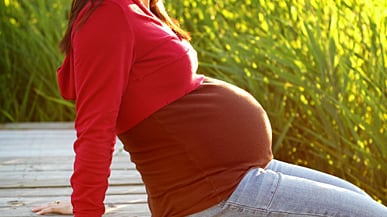A newly released report shows that the teenage birth rate has hit a 70-year low—and scientists are baffled as to why. Casey Schwartz on the theories that could explain the dramatic drop.
Even as teen moms became a staple of American television—from Bristol Palin on Dancing With the Stars to the teary young women of MTV's 16 and Pregnant—the nation's actual teenage birth rate experienced an extraordinary drop last year that's baffling researchers and leading to all manner of theories about what caused the decline.
On Tuesday, the Centers for Disease Control and Prevention published its preliminary findings of all things birth rate for America in 2009. The report showed that the birth rate among American teenagers is now the lowest it has been in the 70 years since such records were kept. In 2009, 39.1 in 1,000 teenagers had a baby, down from 41.5 in 2008, a 6 percent decrease.
“Six percent is a huge drop,” said Bill Albert, chief program officer for the National Campaign to Prevent Teen and Unplanned Pregnancy. “To get a birth rate dropping 6 percent in one year is really quite remarkable.”
The heft of the decline seemed to catch experts and advocacy groups off guard, and no clear explanation for the change was forthcoming. But the drop was in keeping with wider trends for Americans in 2009. The overall fertility rate declined by 3 percent from 2008. There was also a striking drop in the birth rate among women in their twenties, which declined by 7 percent from 2008, and is now at its lowest level since 1973. The only exception to the downward trend in birth rate was women between 40 and 44 years old; in that age group, it went up by 3 percent.
Since 1991, when it hit its all-time high, the teen birth rate in the U.S. had been in steady decline. That trend reversed in 2006, with an abrupt surge over two consecutive years of teenage pregnancies. Now, according to Albert, “It appears as though the nation is back on a happy trend downward in that the uptick was just that—an uptick and an anomaly.”
Albert said he believes that this two year uptick between 2005 and 2007 may have in fact had a “silver lining,” in that it sparked renewed public and legislative attention to the issue after a lull caused by 14 years of progress.
The relatively dramatic decline this year is perhaps inflated by the aberration of the 2006 and 2007 upturn, which presented an unnaturally high jumping point.
“To get a birthrate dropping 6 percent in one year is really quite remarkable.”

It’s not clear whether teens are having less sex, using more contraception, or some combination of both. The National Survey of Family Growth gathers information of this kind, but the most recent version dates back to 2006.
“We’re waiting for the latest batch of data from that survey that will cover the final few years up to 2008 that will allow us to understand, for example, the uptick that we saw not too long ago and also the decline that we’re now seeing,” said Brady Hamilton, a statistician at the National Center for Health Statistics, which was responsible for processing the CDC’s data.
Some experts are pointing to the economic recession as an operating factor. Of course, for anyone who knows a teenager or recalls the experience of being one, it’s hard to connect the dots between the state of the national economy and the decision to have unprotected sex.
Albert was initially skeptical that the economy could be responsible for the downturn, but has become a “recent convert” to the possibility.
“It may be that the recession has had a bit of a sobering effect on teenagers in the following respect: Maybe their parents are having a tough time. Maybe they have neighbors who have been unable to find a job. Maybe they have neighbors who have lost their home,” he said. Survey data on teens show “they are very, very pessimistic about their economic future. Maybe that has placed a governor of sorts on their sexual appetite.”
One factor Albert is disinclined to think is a reason for the decline in birth rate is an increase in abortions. “What we have seen in the past nearly two decades is that teen pregnancy, abortion, and birth rates were all declining at the same time. Put another way, the declines in teen births since 1991 have not been driven by increases in abortion but, instead, in decreases in the underlying pregnancy rate.”
Historically, teenagers from 18 to 19 years old are the most difficult to effect with messages of pregnancy prevention, but this year the 18-19 year olds followed in the downward trends. The decline in teenage birth rates also cut across all racial groups, and was particularly striking among Latinas, among whom 10 percent fewer had babies in 2009.
But whatever the reasons for the decline, it’s not a statistical accident. Brady Hamilton confirmed that the process by which the survey was carried out this year was consistent with that of previous years.
On the issue of teen pregnancy, however, the U.S. remains far behind Europe and Canada. The U.S. has almost twice as many teenage births as Great Britain, and almost 10 times as many as Switzerland. Albert says this gap might reflect a fact that's almost as startling as the drop in teen birth rates itself: The social consensus in America is not as strong as in comparable countries that “starting a family when you’re 15, 16, 17 years old is simply not OK.”
Casey Schwartz is a graduate of Brown University and has a master's degree in psychodynamic neuroscience from University College London. She has previously written for The New York Sun and ABC News. Currently, she's working on a book about the brain world.






